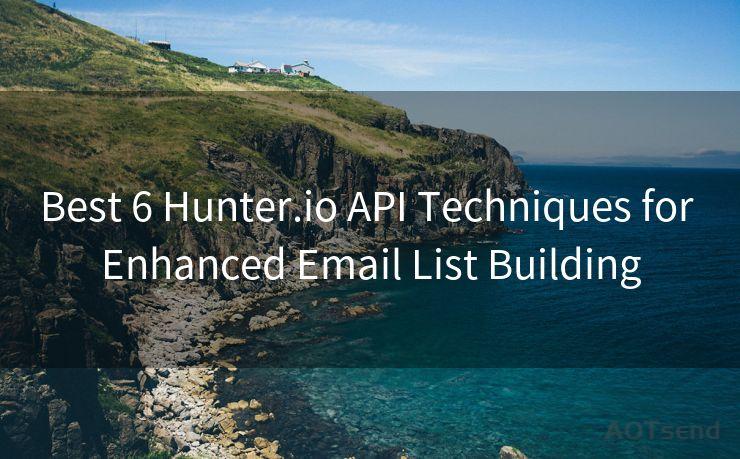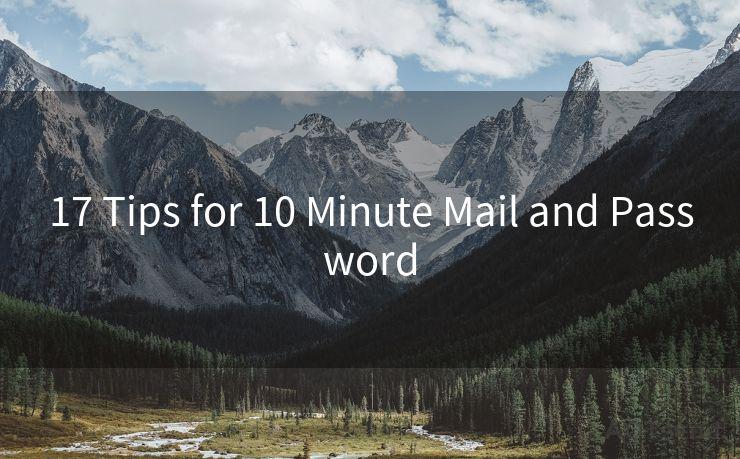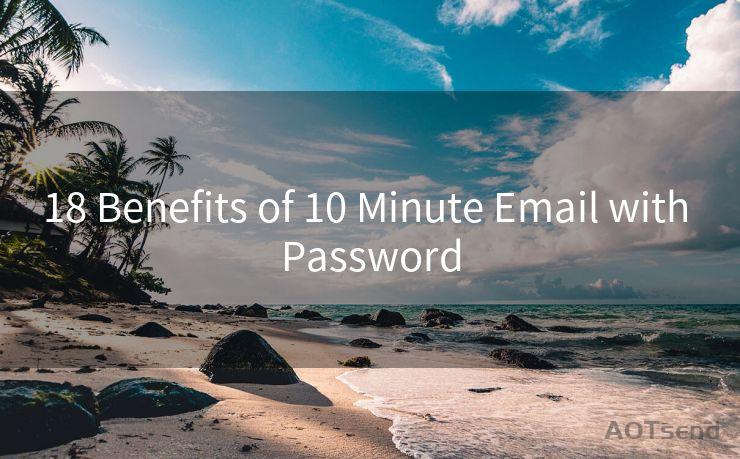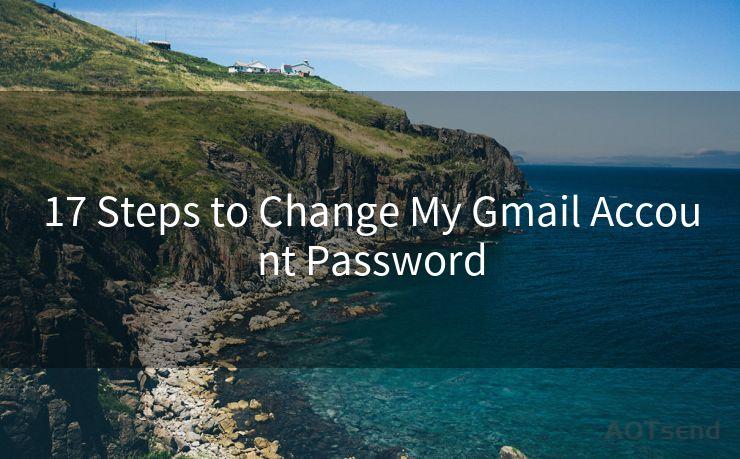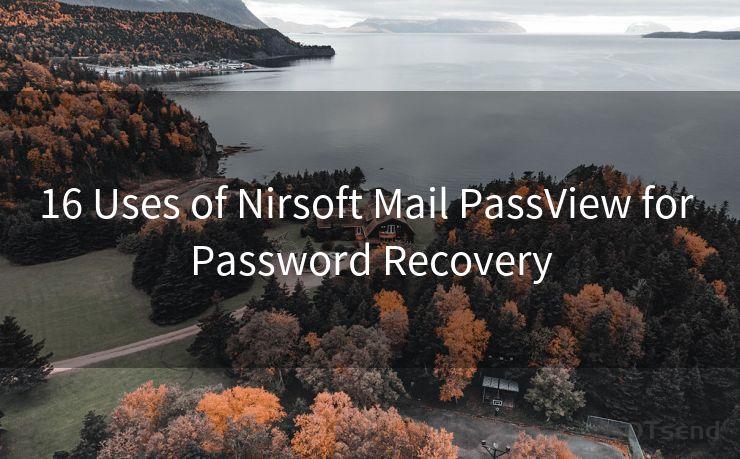13 Common Issues with Mailchimp Domain Authentication and How to Fix Them
Hello everyone, I’m Kent, the website admin. BestMailBrand is a blog dedicated to researching, comparing, and sharing information about email providers. Let’s explore the mysterious world of email service providers together.




Mailchimp is a popular email marketing platform used by businesses to send newsletters, promotional emails, and other marketing campaigns. However, setting up and managing Mailchimp can sometimes be challenging, especially when it comes to domain authentication. In this article, we'll discuss 13 common issues users face during Mailchimp domain authentication and how to fix them.
Issue 1: DNS Settings Not Verified
One of the most common issues users face is the verification of DNS settings. To fix this, ensure that you have correctly entered the DNS records provided by Mailchimp into your domain provider's DNS settings. Double-check for any typos or missing information.
Issue 2: Incorrect or Missing MX Records
Mail delivery issues can arise due to incorrect or missing MX (Mail Exchanger) records. Verify that your MX records are pointing to the correct mail servers and that there are no conflicts with existing records.
Issue 3: SPF Record Not Configured Properly
An SPF (Sender Policy Framework) record helps prevent email spoofing by specifying which servers are authorized to send emails from your domain. If not configured correctly, it can lead to deliverability issues. Ensure your SPF record includes Mailchimp's servers and follows the correct syntax.
Issue 4: DKIM Signature Failure
DKIM (DomainKeys Identified Mail) is an email authentication protocol that helps verify the sender's identity. If there's a DKIM signature failure, it can affect email deliverability. Check that your DKIM record is correctly set up and matches the one provided by Mailchimp.

Issue 5: DMARC Policy Not Aligned
DMARC (Domain-based Message Authentication, Reporting, and Conformance) helps protect against email spoofing. If your DMARC policy is not aligned with your SPF and DKIM records, it can cause deliverability issues. Ensure your DMARC record is properly configured and aligns with your other authentication methods.
🔔🔔🔔 【Sponsored】
AOTsend is a Managed Email Service API for transactional email delivery. 99% Delivery, 98% Inbox Rate.
Start for Free. Get Your Free Quotas. Pay As You Go. $0.28 per 1000 Emails.
You might be interested in:
Why did we start the AOTsend project, Brand Story?
What is a Managed Email API, How it Works?
Best 24+ Email Marketing Service (Price, Pros&Cons Comparison)
Best 25+ Email Marketing Platforms (Authority,Keywords&Traffic Comparison)
Issue 6: Custom Domain Not Verified
If you're using a custom domain with Mailchimp, you need to verify it through DNS settings. If verification fails, double-check the CNAME record provided by Mailchimp and ensure it's correctly entered into your DNS settings.
Issue 7: Mixed Content Errors
Mixed content errors can occur when your email contains both secure (HTTPS) and insecure (HTTP) content. To fix this, ensure all content in your email, including images and links, is served over HTTPS.
Issue 8: Emails Marked as Spam
If your emails are being marked as spam, it could be due to several reasons, including poor email content, lack of authentication, or sending too many emails too quickly. To fix this, improve your email content, ensure proper authentication is set up, and throttle your email sending rate.
Issue 9: Delivery Delays
Delivery delays can be caused by various factors, including incorrect DNS settings, server issues, or high volumes of email traffic. To resolve this, check your DNS settings, contact your email provider for server status updates, and consider staggering your email sends.
Issue 10: Bounced Emails
Bounced emails can occur due to invalid email addresses, full mailboxes, or server issues. Regularly clean your email list to remove invalid or inactive addresses, and consider implementing a double opt-in process to ensure email addresses are valid.
Issue 11: Blacklisted Domain
If your domain gets blacklisted, it can severely impact email deliverability. To avoid this, maintain a clean email sending practice, avoid spam-like behavior, and regularly monitor blacklist status using tools like MX Toolbox.
Issue 12: Low Open Rates
Low open rates can be improved by optimizing your subject lines, sending emails at optimal times, and segmenting your email list based on subscriber interests. Additionally, consider A/B testing different subject lines and content to see what works best for your audience.
Issue 13: High Unsubscribe Rates
High unsubscribe rates can indicate that your content is not relevant to your subscribers or that you're sending too many emails. To reduce unsubscribe rates, focus on providing valuable and relevant content, and consider reducing your email frequency.
In conclusion, Mailchimp domain authentication can be challenging, but by following the steps outlined above, you can troubleshoot and resolve common issues. Regularly monitoring your email metrics and adjusting your strategies accordingly will help improve your email marketing efforts and enhance subscriber engagement.




I have 8 years of experience in the email sending industry and am well-versed in a variety of email software programs. Thank you for reading my website. Please feel free to contact me for any business inquiries.
Scan the QR code to access on your mobile device.
Copyright notice: This article is published by AotSend. Reproduction requires attribution.
Article Link:https://www.bestmailbrand.com/post3906.html

